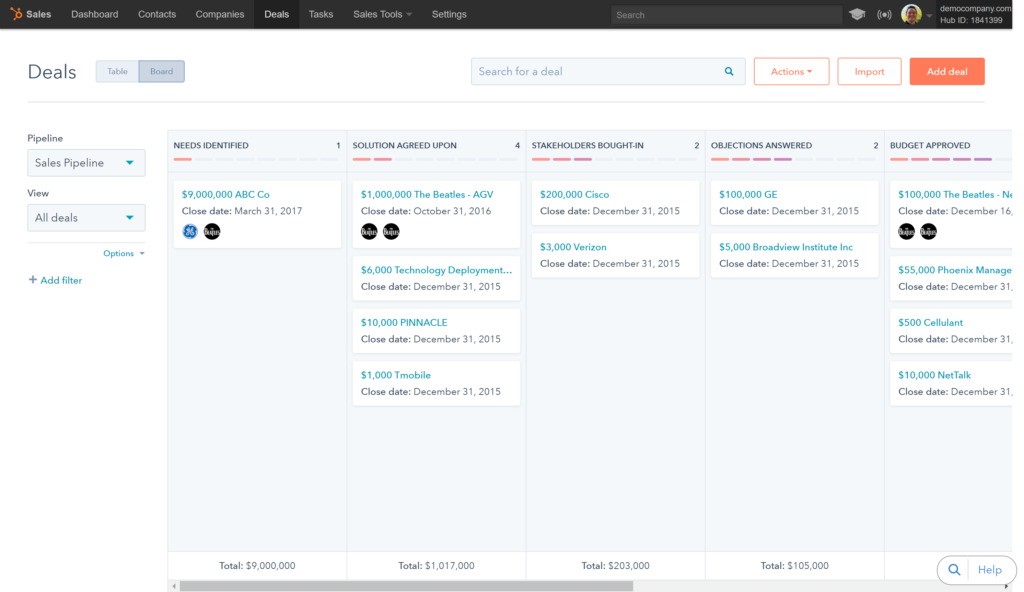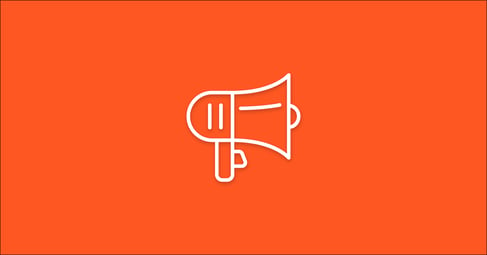Written By:
Tim Stobierski
The world of buying and selling has changed a lot over the last few decades, to the point where buyers really don’t want to be sold to in the traditional sense. Traditionally, the sales process is a very one-size-fits-all approach, which is a big turnoff to today’s buyers, who like things customized to their needs.
Developing a buyer’s journey for your product is one critical way you can personalize your sales process to better fit the desire of your prospects. Having a buyer’s journey in hand will make your inbound marketing and inbound sales job a lot smoother.
Buyer’s Journey?
The buyer’s journey is the process that every buyer goes through as they become aware of, consider, and ultimately decide to purchase (or not purchase!) a product or service. It is usually broken into 3 key stages:
- Awareness Stage: The buyer becomes aware of a problem they are experiencing or an opportunity they would like to pursue.
- Consideration Stage: The buyer understands his problem or opportunity and is now seeking out the various they have in moving forward.
- Decision Stage: The buyer is ready to make a decision about how they want to move forward to rectify their problem or pursue their opportunity.
Every business is different in that it sells different products or services, which ultimately attracts different kinds of buyers who are facing their own unique problems or opportunities. This is why it’s incredibly important for every sales and marketing team to understand the journey that their ideal buyer goes through; without it, you may not be producing the right kind of marketing content or following the right sales process, which will produce bad leads and missed sales.
How Can We Create a Buyer’s Journey for Our Customers?
As every customer base is unique, the best way to document your buyer’s journey is to review your company’s own unique experiences with customers. By conducting interviews with current customers, old customers, leads, and your sales team, you can begin to understand the process that your buyers go through on their journey to making a decision.
For the Awareness stage, you should ask:
- How buyers describe their goals or challenges
- How buyers educate themselves on their goals or challenges: Reading blogs, conducting research, speaking with experts, etc.
- What the consequences of inaction are (on the part of the buyer): Lost revenue? Missed Growth? Etc.
- How do buyers decide whether or not the goal or challenge should be prioritized compared to other goals and challenges?
- Do buyers have any misconceptions about how a goal or challenge would need to be addressed.
For the Consideration stage, you should ask:
- What different kinds of solutions are available for resolving these problems or opportunities?
- What pros and cons do buyers see in these different solutions?
- How do buyers educate themselves on the different categories of solution?
- How do buyers ultimately make the decision about which category of solution is the right fit for their needs?
And for the Decision stage, you should ask:
- What do buyers like about your offering compared to other solutions?
- What concerns do they have about your offering compared to others?
- What criteria is used to evaluate the different solutions to their problem/opportunity?
- Who ultimately is the decision maker? If it is a team, how does each different person differ in perspective?
- Besides simply purchasing a product or service, does the buyer need to go through any other process if they go with your offering, such as implementation plans or a training period?
After you have all of this information gathered (and more: More is always better!) you can use it to create a sales and marketing plan that will attract leads relevant to your business, and a sales process that is more likely to appeal to your ideal buyer.
Marketing and the Buyer’s Journey
Marketing’s main objective is to generate leads. By customizing their content to the buyer’s journey, they can be sure that they are attracting the right kinds of leads—those that are likely to become customers.
This is accomplished in two ways. First, by creating content in the form that your buyer is likely to search for (whether this be blog posts, emails, infographs, webinars, video, etc.). And second, by addressing the topics that your buyer is searching for. To be truly effective, the content should be split amongst the three stages of the buyer’s journey (awareness, consideration, and decision) so that you can attract leads no matter what particular stage they fall into.
Once you have begun collecting leads through your content, you can score them and pass them along to your sales team to continue moving them through the process. But Marketing’s job isn’t done at that point: They can continue to enrich Sales with content that they can then use to make leads happy and more willing to buy.
Sales and the Buyer’s Journey
The buyer’s journey isn’t only the concern of the marketing department: It should also shape the way that Sales sees their own process.
Sales is likely to encounter buyers at every stage of the buyer’s journey. And whether the buyer is currently in the awareness stage, the consideration stage, or the decision stage, Sales can help to move them along in the process by providing value and answering any questions that the buyer has.
“Adding value” is the key here, from a salesperson’s point of view. By enriching the buyer as they go through the process of making a decision, the salesperson has the ability to build a trusting relationship with the buyer. And because trust is one of the single most important components of any successful sale, you can understand why it is important to begin building it as early as possible.
Unfortunately, many sales organizations align their process to the sequence they would like their deals to progress through, rather than to the sequence buyers have to follow to make a decision. This puts the emphasis on the the salesperson’s responsibility to their manager rather than to helping the buyer achieve their goals. In this scenario, deal stages might look something like this:
- Appointment Scheduled
- Qualified to Buy
- Presentation Scheduled
- Decision Maker Bought-In
- Contract Sent
- Closed Won
The disadvantage to this approach is that it does not put the emphasis on helping the buyer process the deal internally—which is often one of the largest barriers to making a decision. In order to flip this around so the focus shifts to the buyer’s journey, you might ask yourself the following questions:
What criteria do your buyers use to evaluate their available options?
Who needs to be involved with the decision? Is there a common decision chain that most deals need to go through before receiving approval?
Does the buyer need to make internal preparations before onboarding a new product or service, such as implementation planning, gaining budget approval, or increasing staffing?
With these questions identified, you might identify the following Deal stages:
- Needs Identified
- Solution Agreed Upon
- Stakeholders Bought-In
- Objections Answered
- Budget Approved
- Contract Reviewed
- Closed/Won

In this scenario, the salesperson is acting more like a facilitator, or a coach, who is helping the buyer navigate internal hurdles and politics in order to reach a decision.
The Buyer’s Journey is Life
Okay, that might seem a little dramatic. But it’s true. For your business to succeed in today’s market, the bulk of the focus of your marketing and sales teams needs to be placed upon the way that your buyer wants and needs to be sold to. By developing a marketing and sales plan around the buyer’s journey and the inbound process, you are establishing yourself as a trustful, valuable resource for current and future buyers.







